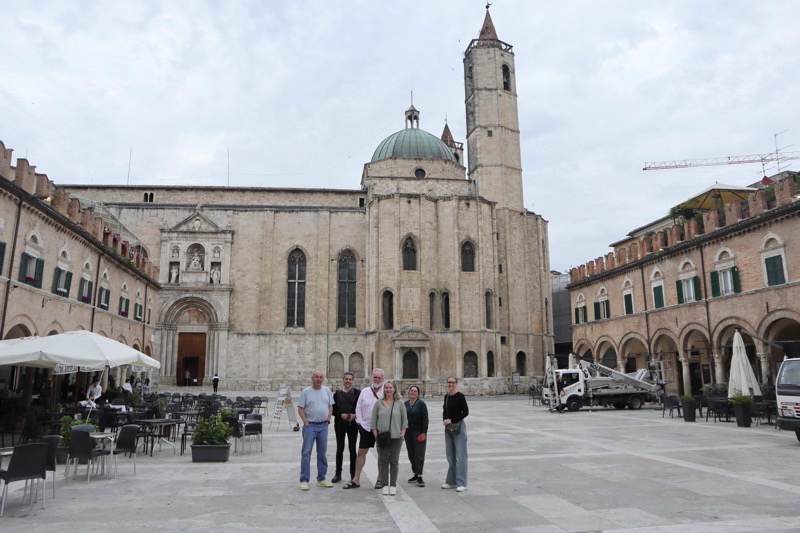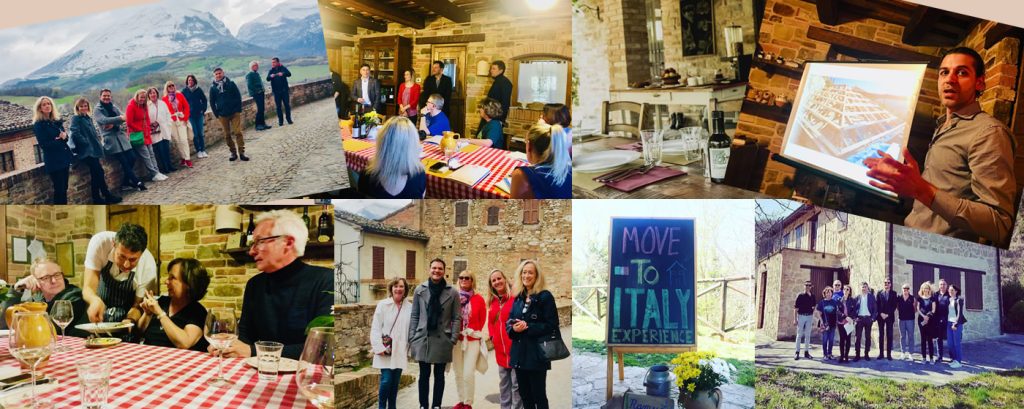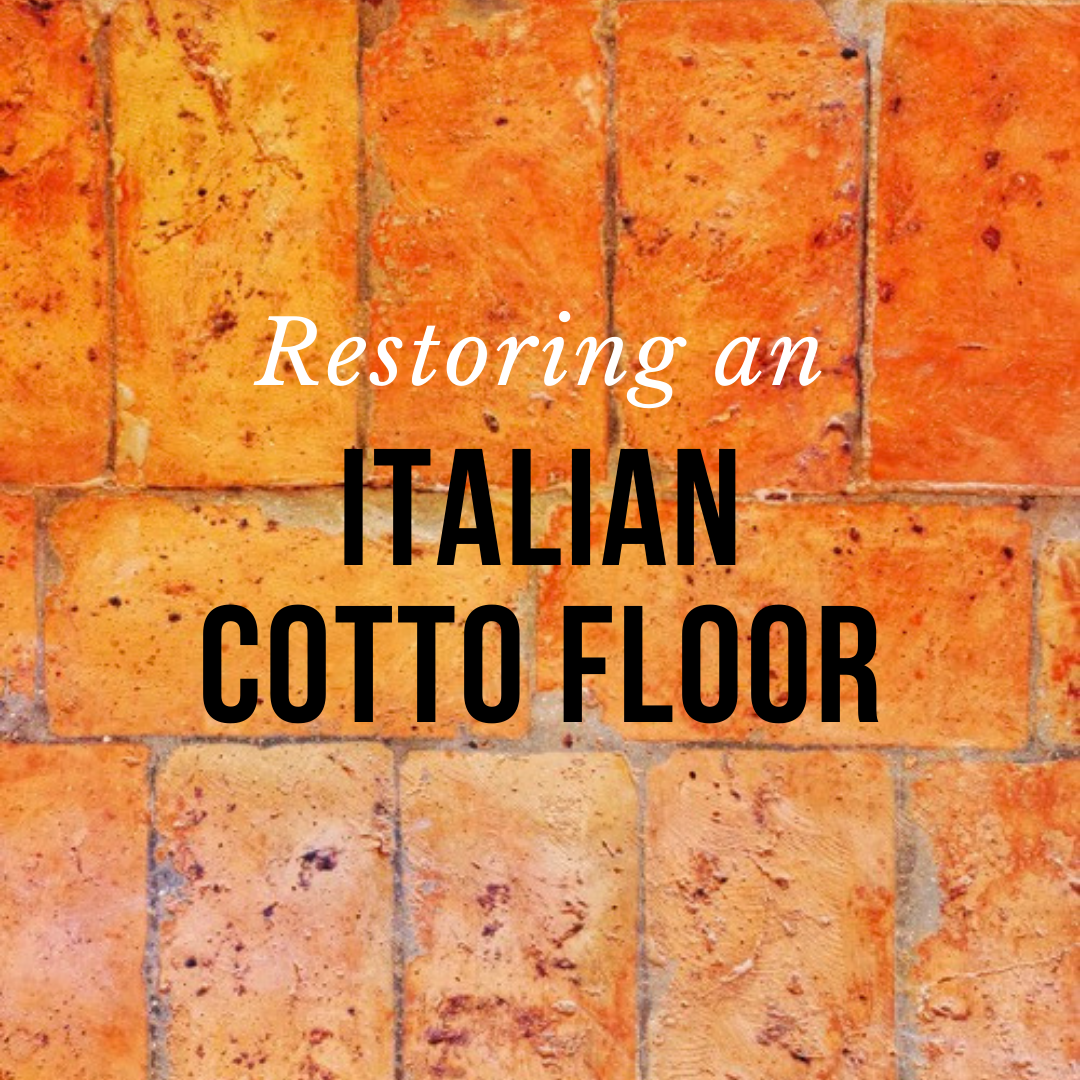
Italian Flooring Restoration
Life is full of surprises, and this is particularly true when renovating a period home. This house in Le Marche, Italy was built in the late 19th century and has had a variety of modifications over the years. Carrying out specific work in other areas of the home, we were concerned to notice a leak from one of the upstairs bedrooms as we were measuring up to have new windows made.
Water ingress from a leaking roof had caused part of the ceiling plaster to disintegrate, and through the hole large oak beams were visible. We asked our builder, Middio to remove a section of the 1970s floor tiles that were also suffering from water damage, and were amazed to discover an ancient cotto floor beneath them.
Skyping our clients at their home, we suggested carrying out more investigations in this room to find out if these long-hidden period features could be salvaged.
THE DESIGN BRIEF
Our investigatory work revealed a beautiful wooden sloped roof, held in place by three large oak beams, all now covered in plaster from the false ceiling that covered them. These would need to be cleaned, sanded and coated with a varnish to prevent wood worm. One beam was heavily water damaged and needed to be replaced.
The plastic 70s floor tiles would be ripped up, where the cotto floor they hid cleaned, repaired and pointed. Finally, a colour enhancing protective sealant would be added, as well as stone skirting.
Electrical rewiring was already included throughout the house as part of the project, and was carried out by our electrician Giovanni before we would begin the restoration works.
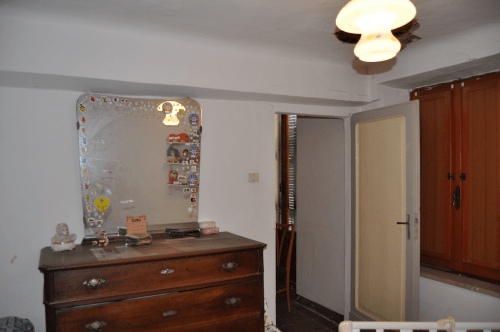
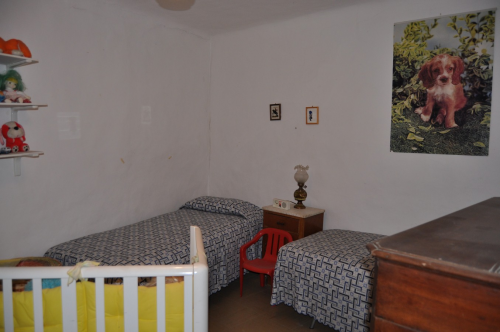
SIGN UP TO JOIN OUR WAITLIST
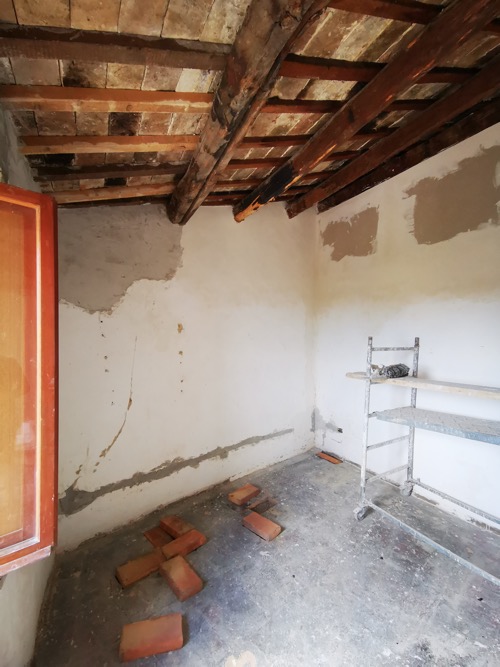
ITALIAN COTTO FLOORING RESTORATION
Thrilled to discover an ancient cotto floor that would have been laid when the house was built, together with large oak beams holding up the roof, we loved the rustic Italian feel that restoring these features would bring.
The ceiling was removed first, already damaged by the leaking roof and damp throughout, it didn’t take long to come down!
Next to go were the plastic floor tiles – it’s always such a wonder that during the 70s and 80s period features were covered up, compared to today where the trend is to enhance them (and long may that continue!)
READ MORE: ITALIAN ROOFTOP TERRACE RENOVATION
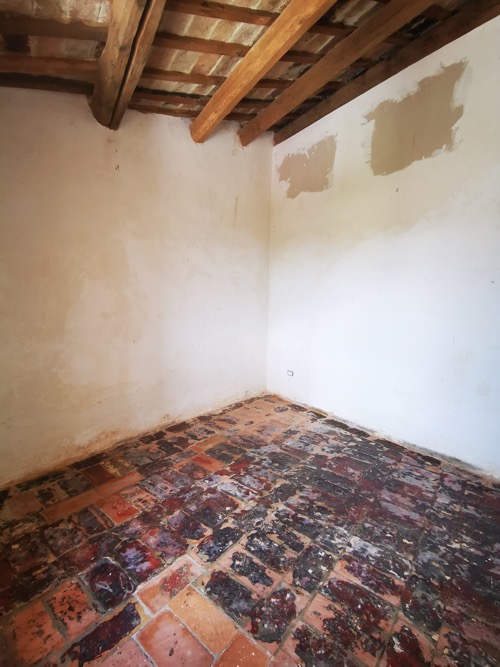
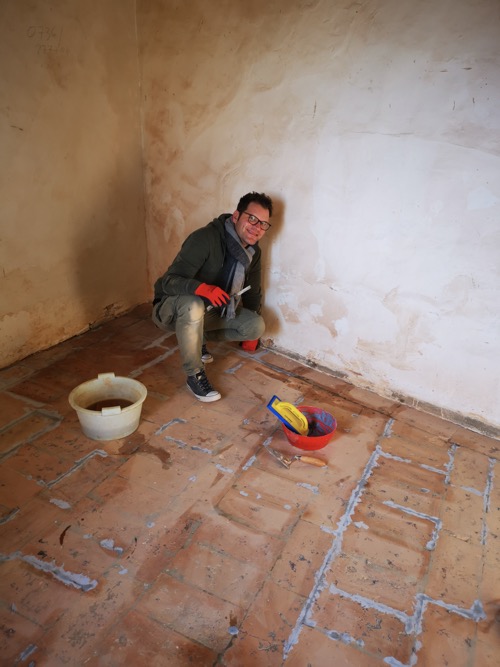
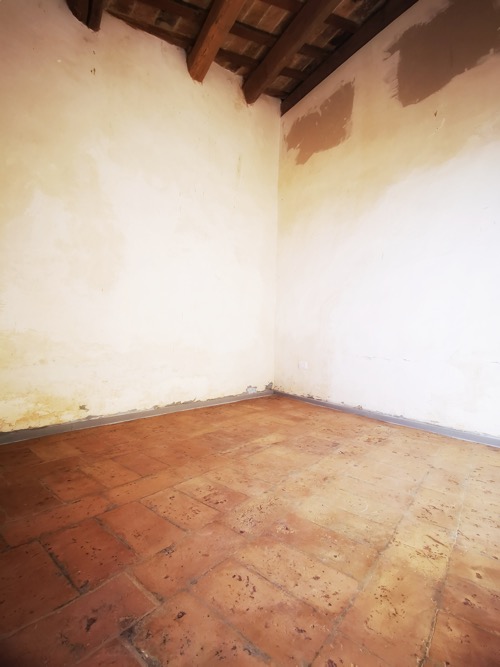
Our next step was to repair the cotto floor – sticky and engrained with tile glue, with some of the bricks damaged by the water ingress, which we replaced. Middio removed the damaged oak ceiling beam and replaced it with a new one, while we cleaned and varnished the others that were fortunately still in good condition.
With the cotto floor exposed, we cleaned it with a solution which gently removed years of dirt, tile glue and old sealants that had been previously applied over the years. This took some time but is always worth the effort when the final result can be seen!
Pointing the floor with an eco-friendly mix to allow it to breathe, the floor was then sealed with a colour intensifying solution to offer protection over the years ahead, before being finished off with a stone grey skirting that contrasts with the redness of the cotto tiles.
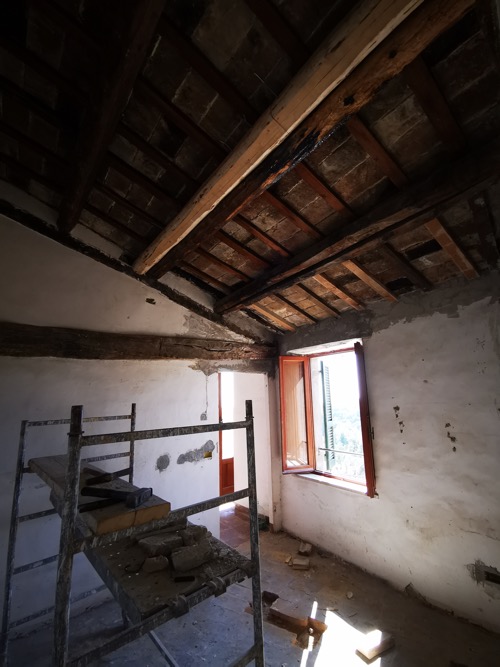
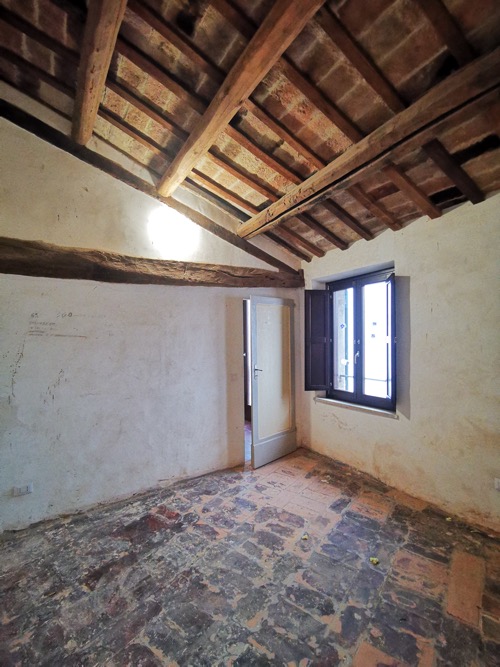

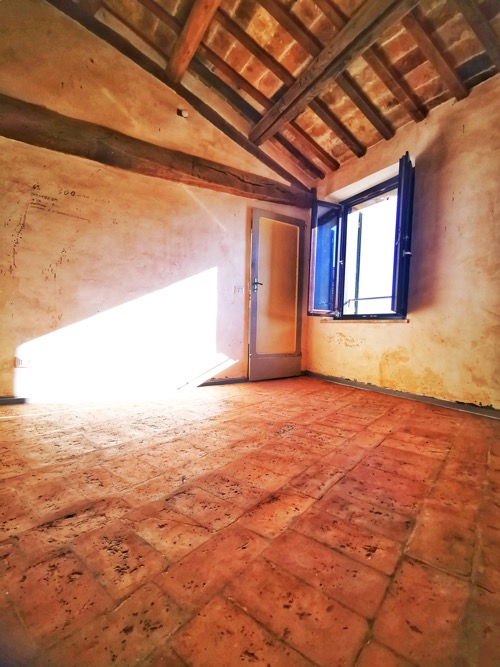
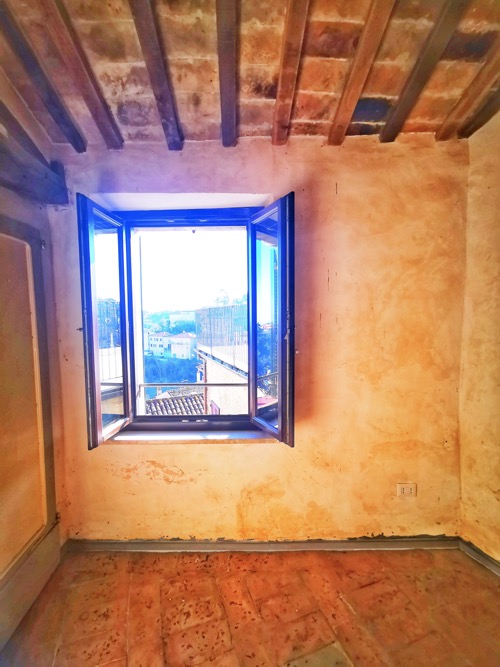
READ MORE: ITALIAN HOME DESIGN & RENOVATIONS

